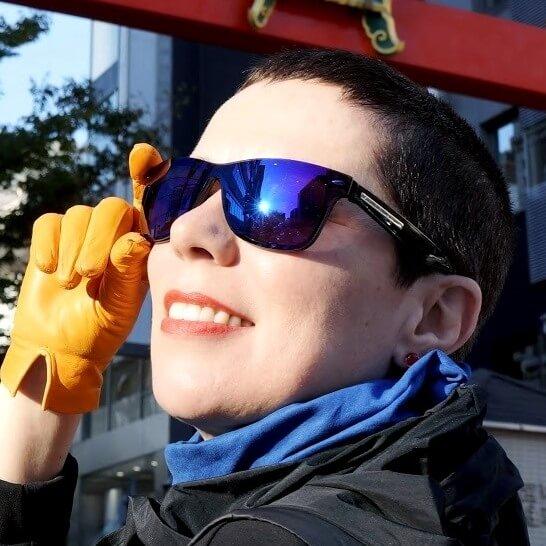What’s the hardest part about working with a traditional team while you’re remote?
Personally I think the hardest part is getting comfortable enough with people to be completely honest with them. But once you get to know their personality and quirks a bit more, it’s easier to have positive, productive disagreements.
I find the hardest thing is that traditional teams will want to have meetings all the time. They also want you to pop into the office fairly frequently for reasons unknown to me. I’m pretty good at telling prospective clients that I only work remotely and that I don’t do daily catch-up calls; I get a good handle for the project and then do a week or two of work before sending over a build for feedback.
People I work with are people and/or companies with whom I’m in co-ventures or with whom I have some kind of partnership. Those kind of relations are already largely remote by nature.
The biggest pain are the time zones…but a small price to pay for such a free life… (Since I always have been the one mostly on the move, I always refer to and set appointments in the time zone of the people I interact with.)
Building relationships is really, really hard. Being remote there’s no grabbing a coffee or lunch together. I try to be as friendly as I can without being a distracting pest. I need to bond with my team but have to find good ways to do it. At one remote position, we were encouraged to use an instant messenger program to ask each other questions…that turns into a word or two of support, which turns into small conversations, which turns into relationships.
Aligning my schedule with other people has been an issue in the past, and the best way I’ve found to deal with it is by setting up one’s business and lifestyle so that you don’t have to touch base live so often. If you can do more work via email and empower other people to make more decisions for themselves, then you’ll spend less time with pointless meetings (or e-meetings ) and more time focused on what you actually want to get done.
Compromise! I am the one who made the choice to live the life I do, so it behooves me to be the one to ensure that it does not impact my team! If that means taking a 2 a.m. meeting while living on an island in the south Pacific, then it is the price I pay for my living arrangement!
We give team feedback for every task. I think because we’re never really face to face, some colleagues are very tough (maybe unfair) in their feedback of others. If people saw each other face to face, I think there would be more communication and less hard feelings, so the feedback would be more accurate. There are some issues with certain people working together and, over a screen or behind your computer, it’s easier to say things that may not really be true or fair. I don’t have a solution and am not sure how to overcome this.
It’s a good question. Many people who don’t or never have worked from home think you’re watching TV or slacking off somehow. I joke about it. I tell them I’m in the pool or wandering around the house or in the bathroom trying not to flush (wireless headset, see). The only other challenge is working with a global team where you’re expected to make evening calls, but I think everyone has that issue, not just remote workers.
It’s easy to forget to keep one another in the loop. The only solution is to be scrupulous about including teammates on communications and to take responsibility for staying informed.
Sometimes it’s a challenge to overcome perceptions from “traditional-thinking” people who believe in the old paradigm that work and productivity can only be achieved in the office. I love using my softphone because the person on the other end sees my office number on the caller ID. In that way, it appears that I am in the office, even though I am working remotely from home.
“Out of sight, out of mind.” I just maintain constant touch points, calls, emails, chatter, Skype, etc.
Not being easily involved in decisions that are made in the physical office. This is a specific situation to a recent team I worked with in another country. Thirty to forty people worked together in a traditional office setting so it was easy for everyone to turn to each other or quickly get together to put ideas up on a white board. I was one of three remote workers, so a lot of the time, we’d find out about decisions that were made after the fact.
It wasn’t a situation that was easily overcome. It takes a lot of time and education to explain what it’s like to be a remote worker, and what a remote setup looks like, so everyone can take each other’s working situations into considerations (time zones, being the only remote worker).
We experimented with cloud-based tools like Trello to keep everyone involved and informed on certain projects, but even then working across several teams, Trello would be easy for the content team to use, while developers preferred Slack.
The remote workers would also visit the physical office once or twice a year for two or three weeks at a time to collaborate in person. This decision helped with relationship building and gave everyone an opportunity to learn about each other’s setup, challenges, and how to effectively work together once some of us were remote again.
The hardest part is not being able to meet the individuals and create a connection with them; it can be ostracizing. To overcome it, I try to use video technology or share photos and I make an effort to communicate with the team so they know I’m part of the team. For example, I will share job aids or cheat sheets I’ve created for myself with the whole team so that there is a sense of sharing and dependability amongst us, even though I’m not on-site with the rest of the team.
The biggest pain point of working with a team while remote is communication. My advice is to have great internet, minimize background noise, use great equipment, and turn the webcams on.
My next piece of advice is to define normal behavior on the team. We can avoid some of the basic miscommunications through the process of creating a team agreement: a basic set of expectations for how to work together. It outlines what kind of information we share, how we communicate with each other, and how we know what each other are doing.
My last piece of advice is to take my “Work Together Anywhere” workshop. It’s designed to share experiences and learn how to avoid miscommunications, increase camaraderie, run pain-free meetings where everyone contributes, and giving and receiving feedback on a virtual team.
Written communication is super critical to your success. People can read between the lines, misunderstand you, or assume things. The more proper your manners are, the better. Keeping your communication clear, concise, and short is important, otherwise when people skim your email (because that’s what they do initially) they miss your point.
Then there is when you misunderstand someone else because they weren’t clear. So much time and energy can be wasted on assumptions, so it’s worked for me, in life and in work life, to avoid assuming things until you get the concept or point of an email of conversation. I’ve learned to stay curious and keep asking questions until things are really clear to me. When you work remotely you can’t be afraid to ask questions or say, “I don’t know.”
I think the biggest pain point of working with a traditional team while I am remote is working in a different time zone.
I suppose it’s guilt. When one of my colleagues has to brave a snowstorm to get to work, and I’m curled with a blanket on the couch, I feel bad. When I run out in the afternoon to do my grocery shopping instead of fighting the post-work rush, I feel a bit guilty.
I’ve always worked with very small teams of, at most, 4 people and have been extremely fortunate to work with people who were on the same page as me regarding the workload. I know that’s not always the case, which is why I stress that I’ve been lucky.

















